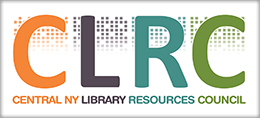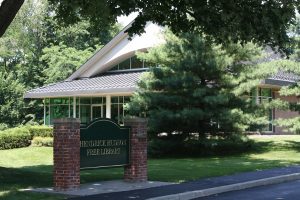Want a sneak preview of the Sustainability Initiative’s vision for libraries?
Jill Davis, director of the Hendrick Hudson Free Library (HHFL) in Montrose, NY (and one of our Sustainability Initiative co-creators) partnered with other institutions to become the first library certified under the Westchester Green Building Challenge (WGBC).
It’s exciting for us because the tools Jill and her colleagues used to gain certification are those we’ll employ in our own benchmarking work. That means Jill’s experience—which she talks about below—is very similar to the Sustainability Initiative’s vision for implementing our programs.
Let’s hear from Jill:
NYLA-SI: How and why did HHFL get involved with the WGBC?
Jill Davis: Back in 2013 Dani Glaser, Founder and CEO of Green Team Spirit and longtime community member approached me and asked if the library would like to take part in a unique program called the Westchester Green Business Challenge. Dani is one of the creators and administrators of the WGBC, which is a partnership of Westchester County Government and the Business Council of Westchester (NYSERDA has since joined). The focus of the challenge is to help all Westchester County Business move along the path of sustainability. The library was part of the pilot group of businesses (both for-profit and not-for-profit) who undertook the challenge.
Before accepting the challenge HHFL was doing what libraries do, providing current information to patrons about energy conservation. In addition, the Library worked closely with Energize Cortlandt, the local chapter of Energize NY, to provide residents of 1‐4 family homes with direct support, useful information and innovative tools to make better energy efficiency choices and spread the message and benefits of energy efficiency. There were recycling receptacles throughout the building and staff was great at reusing plastic containers for crafts and old paper for routing slips. Participation in WGBC allowed us to be a model for the community and it gave us the opportunity to showcase what we were already doing right while helping us to find ways we could do more.
SI: How long did it take for the library to meet the certification requirements? Was it an onerous process?
JD: We began working towards certification in late 2013, and achieved it in January 2015. I would not say that the process was onerous. It was informative, educational, challenging and fun. The Westchester Green Business Challenge application and checklist, along with the GHG Emissions Tool, made the whole process easy to understand and follow. There was great support from the administrators of the program, as well as all the other pilot groups. Since the pilot groups were big and small, for profit and non for profit we all had different challenges but found creative ways to ultimately meet the criteria.
SI: Now that HHFL is certified, what do you do differently?
JD: Now that we have completed the official certification process the library continues to collect relevant data on energy, waste, purchasing and submit it yearly to WGBC. We maintain active enrollment in the program and attend quarterly seminars which focus on the advancement of sustainable practices (employment, marketing etc.). We have quarterly meetings of our Green Team to discuss what else we can be doing, and we incorporate sustainable practices, vendors, programs and more into our library operations and invite the community to come see what we have done and what we are doing to continue to educate and advance our mission of reducing our impact on the environment. We hope that this encourages them to do the same.
SI: Would you recommend this certification process for other libraries?
JD: I would definitely recommend the certification process to other libraries. Even if for some reason you can’t achieve full certification there are still big benefits. Relationships are formed with other community businesses who are participating in the program, cost savings are realized, additional monies can be secured for education and programming, patrons and staff alike start thinking differently both at work and at home, and the community views their library and its practices as something to be modeled (to name a few).
Read more about this project in the Fall 2014 issue of JLAMS or email Jill Davis with questions.
Submitted by Claudia Depkin

